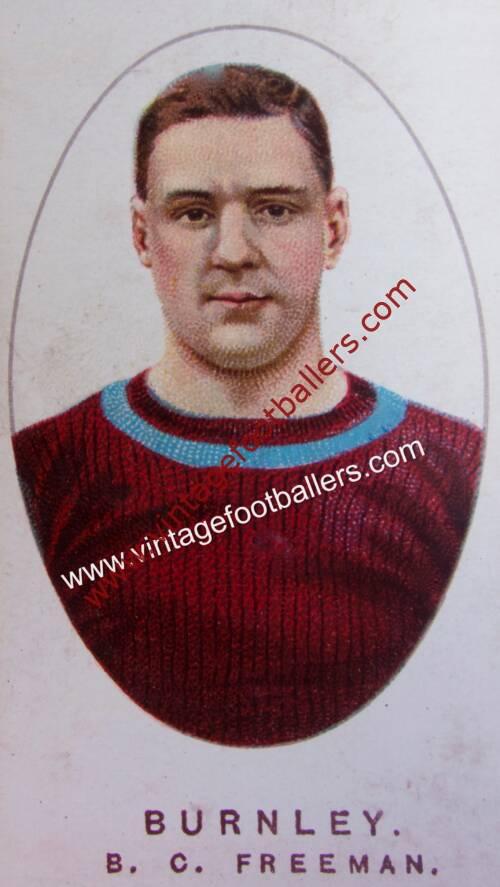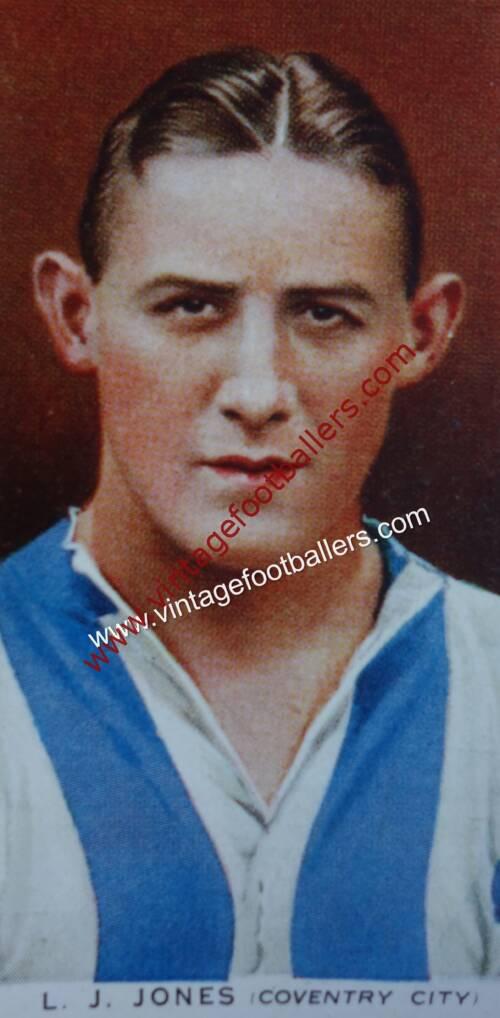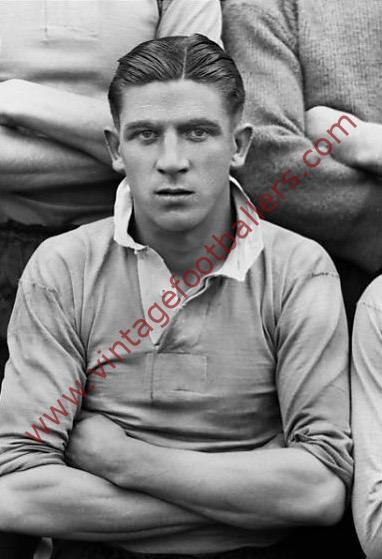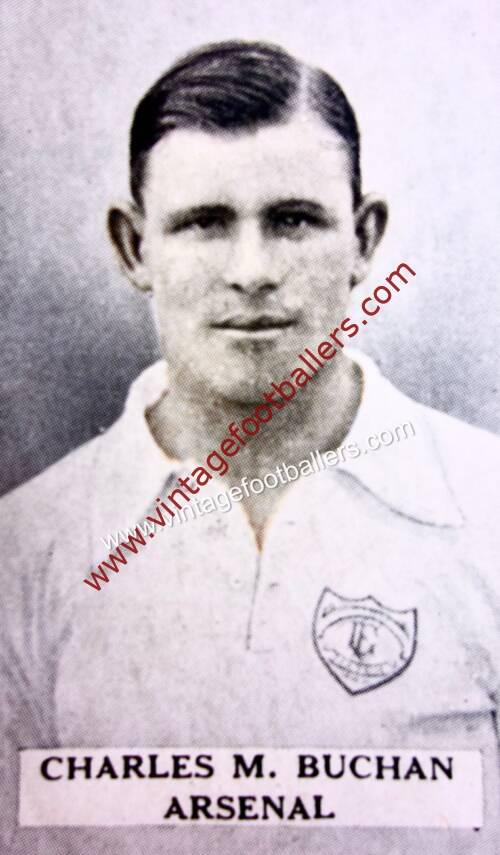Please choose your photo size from the drop down menu below.
If you wish your photo to be framed please select Yes.
Note: 16″x 20″not available in a frame.
Images can also be added to accessories. To order please follow these links
£8.95 – £49.95
Please choose your photo size from the drop down menu below.
If you wish your photo to be framed please select Yes.
Note: 16″x 20″not available in a frame.
Images can also be added to accessories. To order please follow these links
West Thurrock, Essex born inside right George Curtis began his football career Anglo of Purfleet before signing for Arsenal as an amateur in December 1936, turning professional the following April. He spent over a year at Arsenal’s nursery club, Margate, before returning to Highbury in February 1938 and made his Football League debut in a 2-1 win against Blackpool at Highbury on 10th April 1939. He went on to make only one further first team appearance which came five days later against Manchester United, Arsenal winning by the same score. The Second World War intervened that September and he spent the War serving in the Royal Air Force stationed in India, but also played over 50 wartime matches for Arsenal. He also appeared as a guest player for West Ham United in wartime league football before returning to Highbury after the conflict, making a further dozen appearances for Arsenal mainly at inside left.
Curtis was sold to Second Division club Southampton in part-exchange for Don Roper in August 1947 in an exchange transfer that also saw Tom Rudkin arrive at The Dell. Nicknamed “Twinkletoes” by his teammates, Curtis was a clever, nimble player, whose feints and tricks were appreciated by the supporters, although they often frustrated his colleagues. ‘Soccer Star’ magazine described Curtis as an “inside-forward-cum-wing-half”.
During his five seasons at Southampton the club narrowly missed out on promotion to the First Division for three seasons in a row; in 1947-48 they finished in third place, a feat repeated the following season (despite having an 8-point lead with 8 games to play) whilst in 1949-50 they were to be denied promotion by 0.06 of a goal, missing out on second place to Sheffield United in a season in which Curtis was ever present, by now mainly playing at right half, having missed only 3 matches in total in the previous two seasons. A regular again in Saints’ 1950-51 campaign he lost his place in September 1951 and played only 4 more matches the same December before he moved to the French Second Division club Valenciennes for a fee of £1,500 in 1952. In all he played 183 matches for Southampton, scoring 12 goals.
He stayed a season with Valenciennes before returning to see out his playing days as player-coach at Chelmsford City in 1953. Curtis’ move to Chelmsford City was somewhat hindered due to a strike in France, but he eventually joined the Southern League side for ‘a four-figure fee’. He then embarked on a coaching course at Lilleshall working with Walter Winterbottom. His coaching skills were quickly in demand and between 1957 and 1961 he was coaching with Sunderland.
His first managerial position came in June 1961 when he was appointed manager at Brighton & Hove Albion. At the end of his first season in charge, Brighton were relegated from the Second Division in last place. He stayed at Brighton until February 1963, when he was replaced by former Arsenal team mate Archie Macaulay. There followed spells as coach with Cambridge University and Hastings, before Curtis took the managerial reins at Stevenage Town from January 1964 until 1967. He then had brief spells coaching at Hull City and with San Diego Toros in 1968.
He was appointed as head coach at Norwegian club Rosenborg ahead of the 1969 season replacing Knut Næss. His first meeting with the Rosenborg players is legendary: “This is a ball,” Curtis stated whilst pointing to the round leather ball. “Don’t go too fast, now!” Odd Iversen laughed.
Curtis introduced modern defensive football to Norway, with a flat backline 4-4-2 formation, pressure on the ball carrier and tactical focus. The 1969 debut season ended with a Premiership title for Rosenborg, with Odd Iversen scoring 26 of the team’s 36 League goals. Despite this success, both the club leadership and the spectators disliked George Curtis’s defensive style and pressure was put on Curtis to play a more attacking style. In September 1969, Rosenborg met Curtis’s former club, Southampton, in the first round of the Inter-Cities Fairs Cup, with Southampton going through 2-1 on aggregate, the goals coming from Ron Davies and Terry Paine with Rosenborg’s goal scored by Sunde.
Curtis was allowed to continue for one more season. Despite coming second in the 1970 League season, it was an anti-climax. The dynamic duo of Iversen and Harald Sunde had been sold to Belgian club Racing Mechelen before the start of the season and with them went all of Rosenborg’s attacking play. 18 league games later, Rosenborg ended up with an almost unbelievable goal difference of 15-5! At the end of the season, George Curtis was dismissed and was replaced by Nils Arne Eggen.
Curtis returned to England, but in 1972 he returned to Norway to coach the Norwegian national team. During the Euro ’72 qualifying campaign, Norway picked up only one point in six matches, and in a World Cup qualifier against the Netherlands on 1st November 1972, Norway lost 9-0. The next year, they suffered a perhaps even more humiliating result by losing 2-1 against Luxembourg. Under his management, Norway played 17 international matches of which only 3 were won before he was sacked in June 1974. Again, he was replaced by Eggen.
Before the 1976 season, he was once again appointed as head coach at Rosenborg. After a car accident in which his Norwegian wife died, Curtis’s focus shifted elsewhere and Rosenborg quickly ended up struggling to avoid relegation. A 4-0 defeat against Third Division side Røros in the 2nd round of the cup sealed his fate: Curtis was released from his contract in August 1976. Again, his successor was Nils Arne Eggen. His final coaching job was spent in Qatar from 1979 to 1981. He retired to live on the Essex coast where he continued to coach youngsters as part of the FIFA coaching scheme, remaining as passionate about the game as ever.
| Weight | N/A |
|---|



